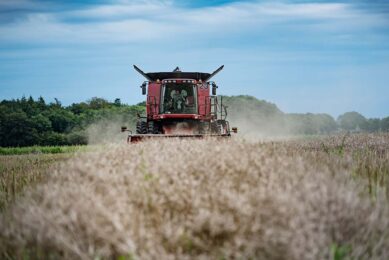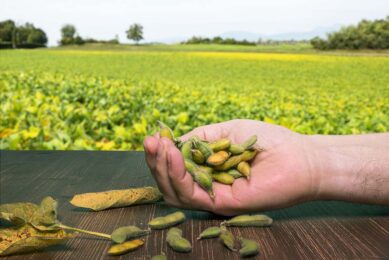Rainfall shortage drives oilseed prices up

Drought is affecting commodity markets. It is not only dry in Europe, but also in the United States and Asia. This is one of the reasons that soy prices are rising.
The International Grains Council (IGC) price index for soybeans has been rising since early June. This stood at 251 points on 5 June (year 2000 = 100 points). The price index is a measure of soybean prices in the world.
Soybeans condition lower than expected
At the beginning of this week, 62% of the acreage of soybeans in the US was in ‘good to excellent’ condition. Traders assumed that the condition of the crop would be better, but the crops lacked moisture this spring. Partly because of this, prices have received a boost in recent days. On 5 June, US quotations fell slightly because the Brazilian supply of soybeans on the world market is increasing. This decline did not continue on 6 June.
Malaysian palm oil prices impact rapeseed prices
Rapeseed prices on the futures market in Paris are also well above the limit of €400 per tonne. Prices are partly benefiting from the rise in palm oil prices in Malaysia. The weather phenomenon El Niño can cause a water shortage in Malaysia, causing prices to rise there.
EU rapeseed and sunflower production adjusted up
In addition, the oil price recovered in recent days after Saudi Arabia announced at the OPEC+ meeting that it would reduce oil production in July. On the other hand, a publication by the French market agency Strategie Grains shows that the EU production of rapeseed and sunflowers for 2023-24 has been adjusted upwards. Rapeseed production for the 2023 harvest is estimated at 20.4 million tonnes, which is 400,000 tonnes more than was assumed a month earlier. Favourable weather in Germany, Poland, France and Romania increased yield potential.
Australian: lower rapeseed expected
Furthermore, the Australian government agency Abares expects rapeseed production for the 2023 harvest to be 4.9 million tonnes. That is a decrease of 41% compared to the 2022 harvest. Due to possible dry weather as a result of the weather phenomenon El Niño, Abares significantly lowered the harvest forecast. That also stimulates the rapeseed listing.
 Beheer
Beheer











 WP Admin
WP Admin  Bewerk bericht
Bewerk bericht